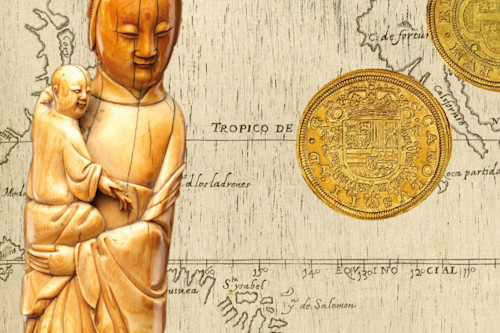The Spanish Pacific, 1521-1815 selected as one of the Best Historical Materials 2020-21

The Committee seeks to improve the usefulness of bibliographies and indexes in the field of history. In addition, the Committee evaluates the pattern and effectiveness of coverage in all fields of history, promotes enhanced availability of historical works and information, and serves as liaison among bibliographers, indexers, publishers, and professional associations.
The Spanish Pacific, 1521-1815: A Reader of Primary Sources edited by Christina Lee and Ricardo Padrón has been selected as one of the Best Historical Materials published in 2020-2021.
Committee Chair Scott P. Libson, Indiana University Bloomington, said
"The Spanish Pacific, 1521-1815 will mainly benefit professors looking for a primary source reader or undergraduate student researchers who lack the language skills to read the sources in the original."
Amsterdam University Press congratulate all involved in this fantastic project.
About the book
The Spanish Pacific designates the space Spain colonized or aspired to rule in Asia between 1521 -- with the arrival of Ferdinand Magellan -- and 1815 -- the end of the Manila-Acapulco galleon trade route. It encompasses what we identify today as the Philippines and the Marianas, but also Spanish America, China, Japan, and other parts of Asia that in the Spanish imagination were extensions of its Latin American colonies. This reader provides a selection of documents relevant to the encounters and entanglements that arose in the Spanish Pacific among Europeans, Spanish Americans, and Asians while highlighting the role of natives, mestizos, and women. A-first-of-its-kind, each of the documents in this collection was selected, translated into English, and edited by a different scholar in the field of early modern Spanish Pacific studies, who also provided commentary and bibliography.
Download the table of contents and introduction
The table of contents and introduction is available to download for free.
Recommend this book to your library
Recommend this book to your library by filling in our Library Recommendation Form or utilising the form provided by your institution.
